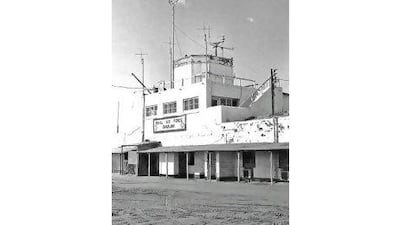In the year after the outbreak of the Second World War, the old Imperial Airways landing strip and refuelling stop became RAF Sharjah.
Now a military base, the British extended the runway and greatly expanded the airport.
This photograph, supplied by the website www.radfanhunters.co.uk, shows the control tower as it was in 1963, at the time almost unchanged in appearance since its wartime role.
With the end of hostilities in 1945, RAF Sharjah played a continuing role in ensuring peace and stability in the region. By then, the Bristol Blenheim light bombers had been replaced with the Hawker Hunter, a subsonic jet fighter and reconnaissance aircraft that was used extensively against insurgents in Aden in fighting between 1963 and 1967.
Following the British withdrawal from South Yemen, Sharjah became the main base for RAF operations in the region, and a new terminal was built. In December 1971, the RAF formally left Sharjah and the base became the emirate's international airport.
Surprisingly, almost all of the base survives, even after it was finally closed to make way for the new and current airport in 1977.
The control tower, hangar and what was the original Imperial Airways guesthouse now comprise Al Mahatta Museum, which tells the story of aviation in the Gulf.
As for the old runway; the straightness of King Abdul Aziz Street as it heads towards the Sharjah Corniche is a clue that this strip of road once carried speeding craft of a very different kind.
Time Frameis a series that opens a window into the nation's past. Readers are invited to make contributions to yourpics@thenational.ae


